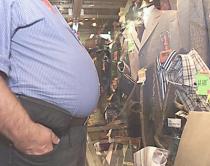Plans to develop four so-called freeway cap parks have recently been announced in Los Angeles. The cap concept, which essentially covers a portion of a freeway with a planted concrete lid, has gained popularity in the last decade as an urban “greening” solution. The multibillion-dollar projects are meant to knit together previously disparate neighborhoods, theoretically creating cohesion and larger-scale community gathering places without having to destroy or displace existing infrastructures.
The four projects are spread across Hollywood, downtown LA, and Santa Monica. Hollywood Central Park would be built atop the 101 Freeway on a proposed 44-acre site between Santa Monica Boulevard and Bronson Avenue. Park 101 would be built atop the “Big Trench” over the 101 Freeway downtown. Santa Monica is hoping to cap portions of the 10 Freeway between Ocean Avenue and 4th Street, and between 14th and 17th streets, creating five- and seven-acre parks.
The cap park frenzy here can largely be credited to Don Scott, an investment banker and former chairman of the Hollywood Central Park coalition, also former chairman of the Hollywood Chamber of Commerce. Scott said that his inspiration for the Hollywood Central Park cap came from an article he read about Boston’s Big Dig. “I remember driving over the Hollywood freeway and thinking about the connection between the two environments.”

After some research, Scott discovered other freeway cap parks in various phases in Cincinnati, Seattle, Phoenix, the District of Columbia, Boston, Hartford, CT, and Charlotte, NC. In LA, a small freeway cap park was built over the 210 Freeway in La Canada-Flintridge; another is under review in Ventura County. The rest of the chamber was quick to support Scott’s idea, and it took off.
According to Francie Stefan, community and strategic planning manager for the City of Santa Monica, no two freeway caps are the same. “Some are glorified bridges, some need center supports, and some just span the whole distance,” she said. Structural design is influenced by whether you get support from outside walls or from center posts, and have mechanical or natural ventilation and lighting.
The largest and furthest along of the parks, the Hollywood Central Park project, would cover a wide swath over the 101 that currently cuts through residential neighborhoods. “The feasibility studies have just been completed,” said Scott. “Friends of Hollywood Central Park is raising money for an environmental impact report, and we’re lobbying for money in Washington.” Designed by AECOM (which has its hand in all four cap parks), the project is expected to cost about a trillion dollars, and though heavy hitters like Senator Dianne Feinstein have pledged support, it is at least several years from groundbreaking and a decade from completion.

The Park 101 project has been given the tall order of knitting together what is one of the world’s most jumbled downtown districts. In an LA Times op-ed in June 2008, project lead Vaughan Davies, director of urban design at AECOM’s LA offfice, said, “The proposed site separates some of our most prized and appealing landmarks—Olvera Street, Chinatown, and Union Station on one side; Disney Hall, the Cathedral of Our Lady of the Angels, and City Hall on the other—creating isolated pockets of activity rather than what we need: a livable, walkable, and unified downtown district.”
Unlike the other projects, Park 101 is designed to host larger events, and also includes “lots of surface parking and at least a million square feet of new development that might include educational, residential, and commercial spaces,” said Davies. The park is in the very early stages of funding and has gathered a “significant” but undisclosed portion of the funds needed for the next study phases. Officials are seeking funds from a variety of infrastructure and stimulus spending packages.
The two projects in Santa Monica, one that would tie together Main Street with downtown Santa Monica, and another that would function as a green space near 14th and 17th streets, are both undergoing preliminary feasibility studies. These too have been awarded to AECOM, but have not been started, though the site at Ocean Avenue and 4th Street would theoretically come first.
“There is no design,” said Sarah Lejeune, senior planner for the City of Santa Monica. “We are just getting the contracts completed for the design and feasibility study, and we’re beginning to build momentum and awareness.” When pressed for a projected date of groundbreaking, Stefan said, “If money grew on trees, we would start tomorrow. Right now, we are trying to figure out what we can afford.”









 Parque Explora
Parque Explora
































